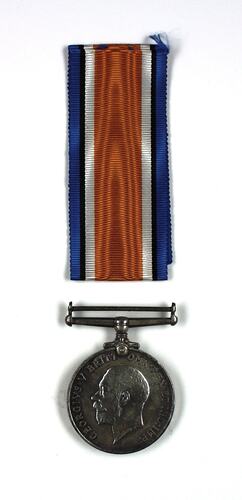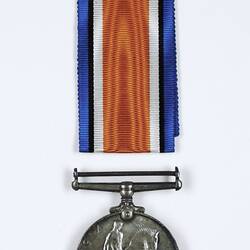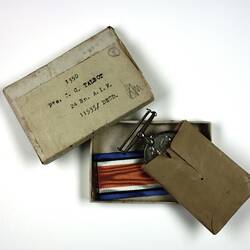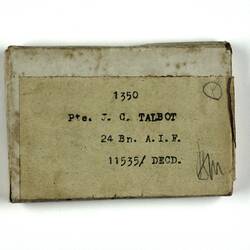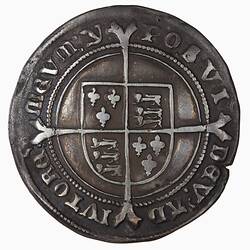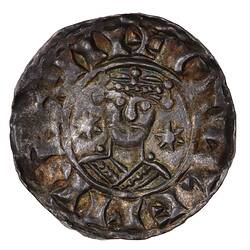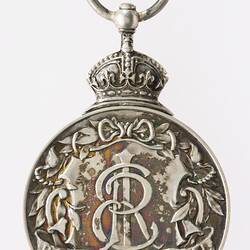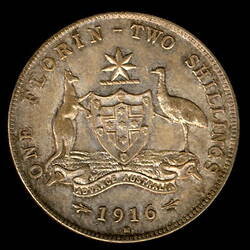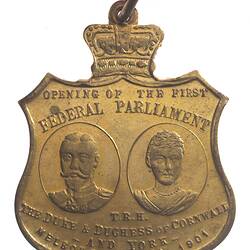Summary
British War medal 1914-1920, awarded to Gunner James Clive Talbot, service number 1350, 24th Battalion, A.I.F.
Part of a collection of material associated with Talbot's World War I service.
James Clive Talbot was a 20 year old grazier and wool classer from 'Yeo Vale', Birregurra, Victoria, when he enlisted to fight in World War I on 2 April 1915. As part of the 24th Battalion he served in Gallipoli and on the Western Front. He was killed in action aged 22, on 22 September 1917 in Belgium (during in the Third Battle of Ypres). His father (perhaps both his parents) appears to have taken the unusual step of visiting his grave - out of the reach of many bereaved in Australia. They also placed a blackwood pulpit at the Birregurra Church of England, in memory of their son, who they knew as Clive. It is inscribed '...in loving memory of our beloved son and brother, James Clive Talbot, killed in action September 22nd, 1917, aged 22 years. He has fought a good fight, he has finished his work; he has kept the faith.'
'The British War Medal, 1914-1920, was authorised in 1919 to be awarded to both eligible service personnel and civilians. Recepients had either entered a theatre of war or rendered approved service overseas between 5 August 1914 and 11 November 1918, as well as service in Russia in 1919 and 1920.'.
Obverse Description
Bare head of King George V facing left; text around, 'GEORGIVS V BRITT: OMN: REX ET IND: IMP:'; the artist's initials 'B.M.' (Bertram MacKennal) are on the neck truncation.
Reverse Description
Naked figure of St. George on horseback advancing right trampling a shield bearing an eagle design and a skull and crossbone. Above, the sun; in the background, the ocean; text around, '1914 1918'.
Edge Description
Text; '1350 PTE. J.C. TALBOT 24 BN. A.I.F.'.
Significance
The James Talbot mourning collection is of particular significance since it documents a set of personal effects from a son lost at war, including a tiny photograph and engraved medal presented to his bereaved parents, and his colour patch, buttons and badges. Importantly, it also includes a large certificate from Ypres Reservoir British Cemetery, Belgium, including cemetery images and Talbot's details pasted into a box at the centre. (Further research may link this to his father's visit to the cemetery.) It provides an important insight into the ways Australians memorialized the distant graves of their loved ones (discussed by Bart Ziino in A Distant Grief, and others).
More Information
-
Collecting Areas
-
Acquisition Information
Purchase
-
Issued By
-
Mint
-
Artist
-
Person Depicted
-
Person Commemorated
-
Organisation Symbolised
-
Inscriptions
Obverse: 'GEORGIVS V BRITT: OMN: REX ET IND: IMP:' / 'B.M.' (Bertram MacKennal). Reverse : '1914 1918'. Edge: '1350 PTE. J.C. TALBOT 24 BN. A.I.F.'.
-
Material
Silver
-
Axis
12
-
Classification
-
Category
-
Discipline
-
Type of item
-
Overall Dimensions
3 mm (Depth), 50 mm (Height), 35 mm (Outside Diameter)
Medal only. Ribbon only, unfolded. length 233mm x width 38mm. Packaging (brown paper envelope in which medal was contained) Height 47mm Width
-
Shape
Round with loop and ribbon
-
References
References: Information on British War Medal from: [Link 1]
-
Keywords
World War I, 1914-1918, Medals, Death & Mourning, Battle of the Somme (Somme Offensive), 1916
